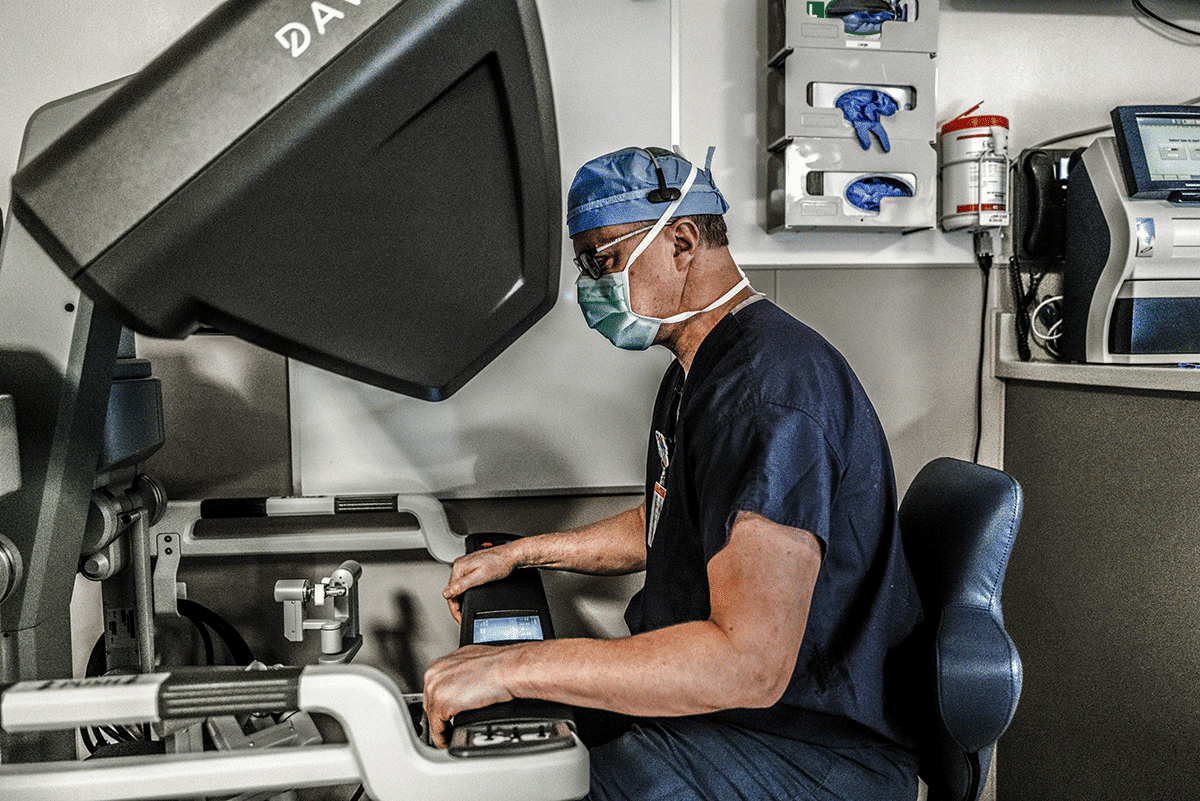If you’ve been diagnosed with hypertrophic cardiomyopathy, your cardiologist may recommend septal myectomy to treat the condition. Does that mean you’ll be having open-heart surgery?
The short answer is: Maybe, but maybe not. While septal myectomy has traditionally been performed as an open-heart procedure, new innovations in performing the procedure offer a less-invasive option for many patients.
Hypertrophic cardiomyopathy is a condition that causes the heart muscle to thicken irregularly, which can make it more difficult for blood to exit the heart. This causes the heart to work harder to pump efficiently and can lead to a number of symptoms, including shortness of breath, chest pain or pressure, fainting, excess fatigue, and heart palpitations.
Those who have hypertrophic cardiomyopathy are at an increased risk of atrial fibrillation, heart failure, and even cardiac arrest. Treatment can vary depending on a person’s symptoms and may include medications, the implantation of electronic devices to help the heart work better, alcohol septal ablation, or septal myectomy.
How Is Septal Myectomy Performed Robotically?
In cases of obstructive hypertrophic cardiomyopathy, where the thickening of the heart muscle is blocking or reducing blood flow, septal myectomy is often recommended. During this procedure, part of the thickened wall between the bottom chambers of the heart (known as the septum) is removed, restoring normal blood flow.
During a traditional septal myectomy, a surgeon makes an incision down the middle of the chest and part of the sternum. The patient is then connected to a heart-lung machine that functions as the heart and lungs while the procedure is being performed.
After the procedure, the patient is removed from the heart-lung machine, the sternum is wired together, and the incision is stitched or stapled up.
But advanced technology and techniques now allow surgeons at Georgia Heart Institute to perform endoscopic robotic septal myectomy, a closed-chest procedure. A robotic septal myectomy is a much less invasive option performed through five small incisions of less than 15 millimeters in length.
Tiny instruments and an endoscope are placed into the body through those small incisions. Seated at a console a small distance away from the patient, the surgeon guides the instruments in real-time using the same hand motions and maneuvers used in traditional septal myectomy.
The thickening of the heart muscle sometimes causes damage to the mitral valve. In that case, surgeons can also repair or replace the mitral valve at the same time as a robotic septal myectomy.
Patients who undergo robotic septal myectomy have similar or improved outcomes compared with open-heart septal myectomy, often recovering more quickly and experiencing fewer complications.
Is Everyone a Candidate for Septal Myectomy?
While robotic septal myectomy offers many benefits for patients, it isn’t an option in all cases. When evaluating whether a septal myectomy is appropriate in your case, your care team will consider a number of factors, including your age, the severity of your condition, and your overall health.
Our ultimate goal is to ensure you receive the treatment option that will serve you best and provide you with the safest short-term and long-term outcomes. This may mean a referral for treatment using another method, such as a nonsurgical procedure known as alcohol septal ablation.
Learn More
Georgia Heart Institute is one of the only programs in the state offering robotic septal myectomy. To learn more or to find out if you are a candidate for the robotic procedure, call (770) 219-7099.


